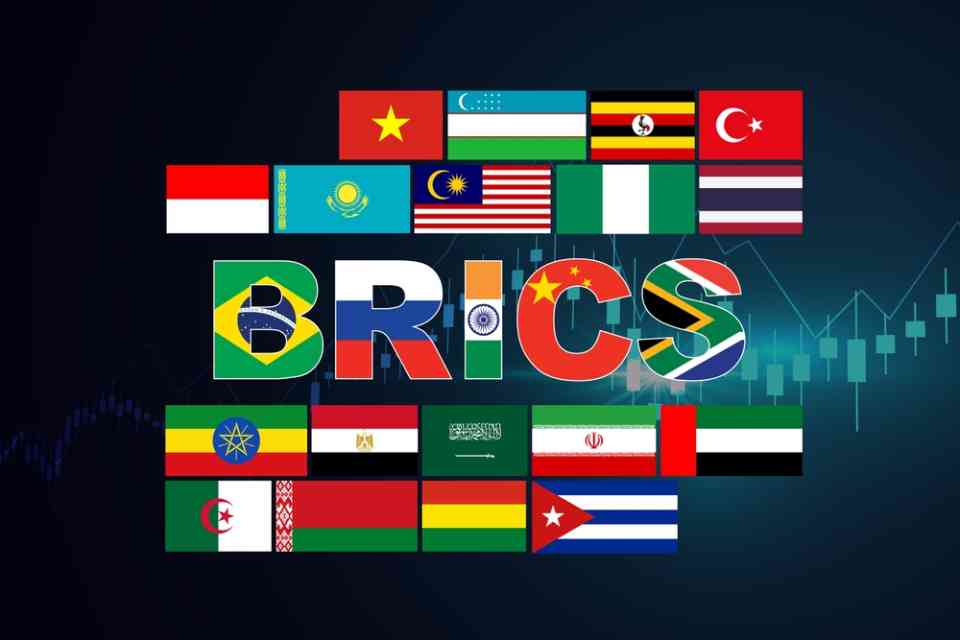BRICS Expands Its Global Influence as Nine New Partners Join in 2025

In a historic expansion, BRICS continues to assert its global economic influence by adding nine new partner countries in January 2025, following the admission of four new members in 2024. With this latest inclusion, the bloc now represents nearly half of the world’s population and accounts for over 41% of global GDP (PPP), solidifying its position as an economic powerhouse and a leader in the production of key commodities like oil, gas, grains, and minerals.
The Global South-led forum, which aims to reshape the global financial and monetary systems and reduce reliance on the US dollar, now includes the following partner nations:
- Belarus
- Bolivia
- Cuba
- Indonesia
- Kazakhstan
- Malaysia
- Thailand
- Uganda
- Uzbekistan
A Path to Full Membership
At the BRICS summit held in Kazan, Russia, in October 2024, 13 nations were invited to become partners, signaling a path toward eventual full membership. Nine of these countries accepted the invitation, while four—Algeria, Nigeria, Turkey, and Vietnam—had not formally responded by the end of 2024. The Russian government emphasized its expectation that the remaining four nations would submit responses in the near future.
BRICS, originally founded in 2009 as a coalition of Brazil, Russia, India, and China, grew with the addition of South Africa in 2010. The 2023 summit in Johannesburg saw further expansion, with Egypt, Ethiopia, Iran, and the UAE officially joining the group in 2024. However, Argentina, initially invited to join under its previous government, reversed its decision when far-right leader Javier Milei came to power in December 2023, withdrawing the country’s membership.
A Rising Global Powerhouse
With the addition of its nine partners, BRICS now includes nine of the 20 most populous countries on Earth, representing a combined population of approximately 4 billion people—roughly half the global total. The bloc’s members include the world’s two most populous nations, India and China, each with over 1.4 billion citizens. Other populous members include Brazil, Russia, Indonesia, Egypt, and Iran, along with new partners like Thailand and Kazakhstan.
Economic Strength and Commodity Dominance
BRICS’ influence extends beyond demographics, with its members collectively contributing 41.41% of global GDP (PPP) following the inclusion of new partners. The bloc’s economic dominance surpasses that of the G7, which accounted for just 29.08% of global GDP (PPP) in 2024—a steep decline from 1990, when it controlled nearly 52%.
The economic rise of China, responsible for 35% of global gross manufacturing production and the world’s largest economy (measured by PPP), has been a driving force behind this shift. By October 2024, China’s economy accounted for 19% of global GDP (PPP), compared to the US at 15%.
BRICS nations are also leaders in global commodity production:
- Agriculture: Brazil, India, and China produce two-thirds of the world’s sugarcane, while China and India account for over half of global rice production. Wheat production from China, India, and Russia exceeds 40% of the world’s total.
- Energy: BRICS includes five of the world’s top 10 oil producers (Russia, China, Iran, UAE, and Brazil) and major natural gas producers like Russia and Iran. China leads the global transition to renewable energy, building more solar and wind capacity than the rest of the world combined.
- Strategic Minerals: BRICS dominates the production of essential minerals like iron ore, copper, and nickel. Indonesia, the world’s leading nickel producer, joined as a partner in 2025, alongside other top nickel producers such as Russia, Brazil, China, and Cuba.
The growing economic clout of BRICS signals a major shift in global power dynamics. In 2024, the five founding BRICS members accounted for a larger share of global GDP (PPP) than the G7, marking a historic turning point. This growth reflects the bloc’s ability to leverage its vast productive capacities and growing alliances across the Global South.
Have you read?
Highest-Paid Athletes in the World.
Largest stock exchanges in the world by market capitalization.
Countries with the largest air forces in the world.
Best European destinations to travel to as a student.
Largest Cities in Africa.
Bring the best of the CEOWORLD magazine's global journalism to audiences in the United States and around the world. - Add CEOWORLD magazine to your Google News feed.
Follow CEOWORLD magazine headlines on: Google News, LinkedIn, Twitter, and Facebook.
Copyright 2025 The CEOWORLD magazine. All rights reserved. This material (and any extract from it) must not be copied, redistributed or placed on any website, without CEOWORLD magazine' prior written consent. For media queries, please contact: info@ceoworld.biz








